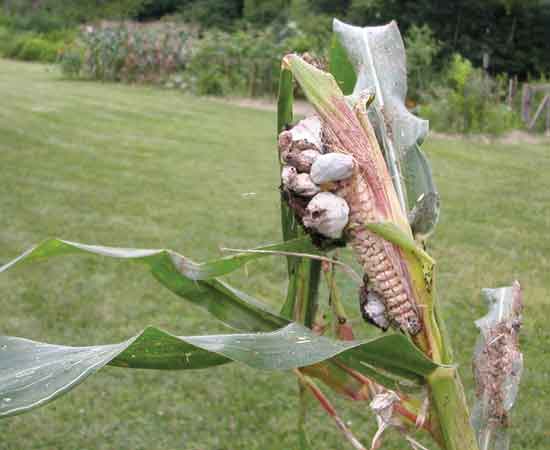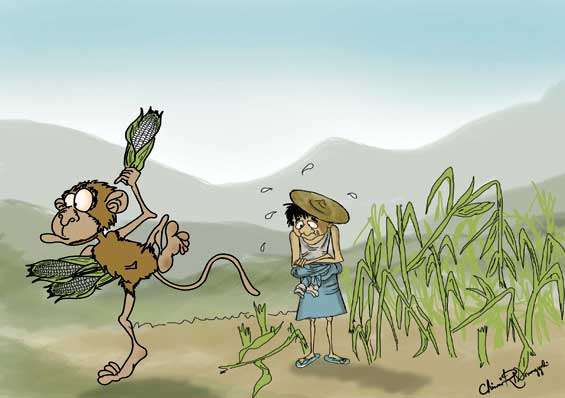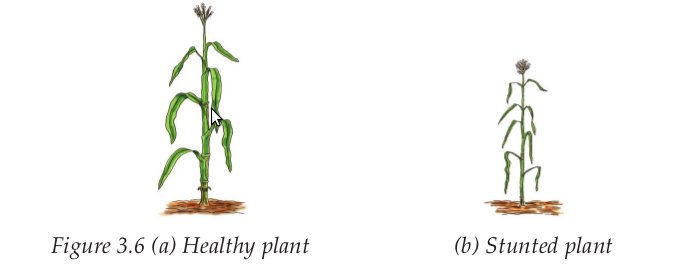- A crop disease is a condition where the appearance, functioning and internal structure of crops show a difference from the normal condition.
- Diseases are caused by small micro-organisms such as bacteria and fungi.
- A crop that has disease is unhealthy.


In Standard 7 you learned that crop pests destroy crops.
Some of these crop pests transmit diseases to crops.
Crops attacked by either pests or diseases are said to be unhealthy.
How do unhealthy crops look like?
How different are they from the healthy crops?
Some of the signs of unhealthy crops therefore include:
1. Stunted growth
When a plant is attacked by disease, it may not grow normally.
The plant does not reach its full size and may therefore be smaller than expected.
This is because the disease may destroy some of the cells of the plant that are necessary for the plant’s healthy growth.

When a plant is attacked by disease, the leaves and the stems may change colour to yellow, orange or pink instead of the normal green colour.
This is the rolling up or folding of the leaves of plants.
Curled leaves can be as a result of lack of water, but if the plant receives enough water, then curling could be a sign of disease.
The leaves roll or fold due to uneven development of the leaves.
A plant is said to have wilted when its leaves droop.
This may occur when the plant lacks water.
But if it occurs even if enough water is available, it is a sign of ill health in the plant.
These are spots or lines found on the leaves or stems.
The spots or streaks are usually of a different colour from that of the leaves or the stem.

Characteristics of healthy and unhealthy crops based on size of plant.

Characteristics of healthy and unhealthy crops based on the nature of leaves.

Characteristics of healthy and unhealthy crops based on discolouration, presence of spots or streaks.

Characteristics of healthy and unhealthy crops based on physical appearance.
